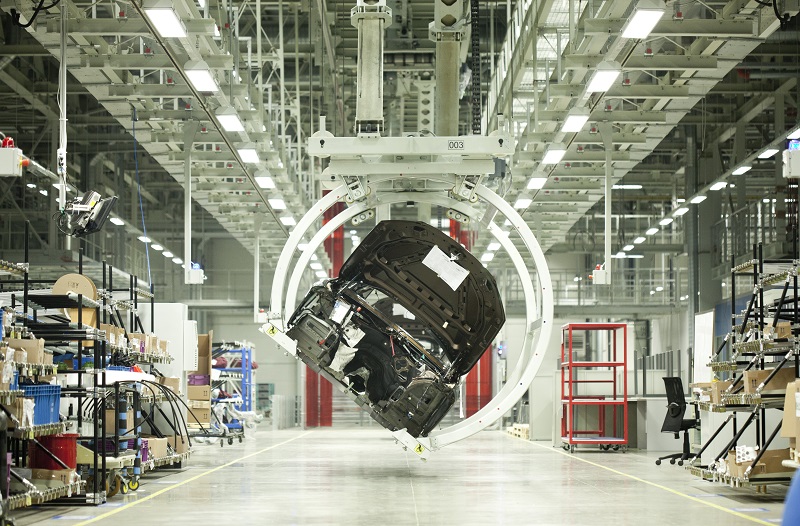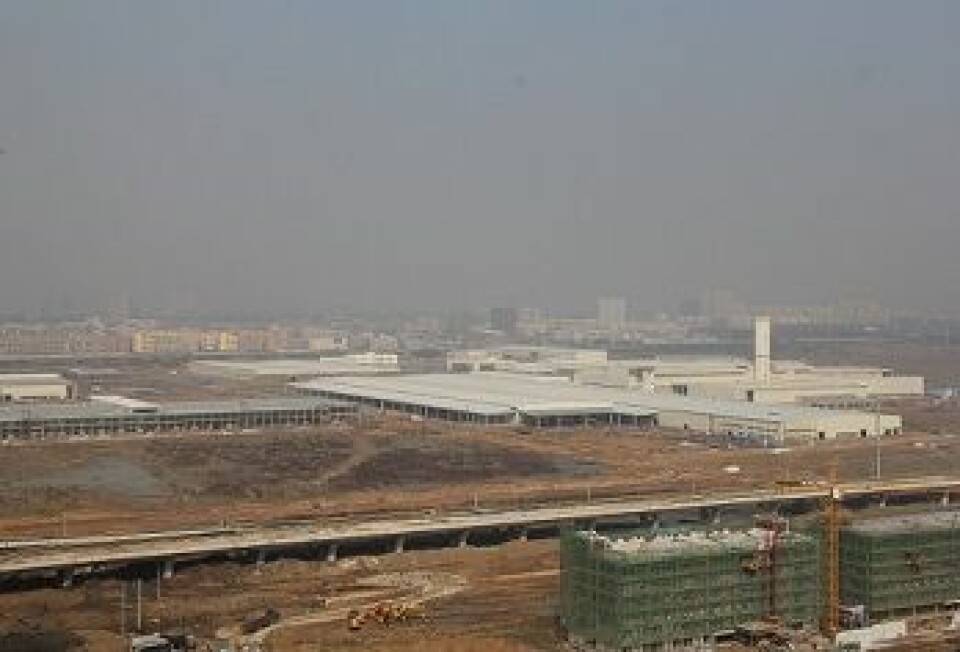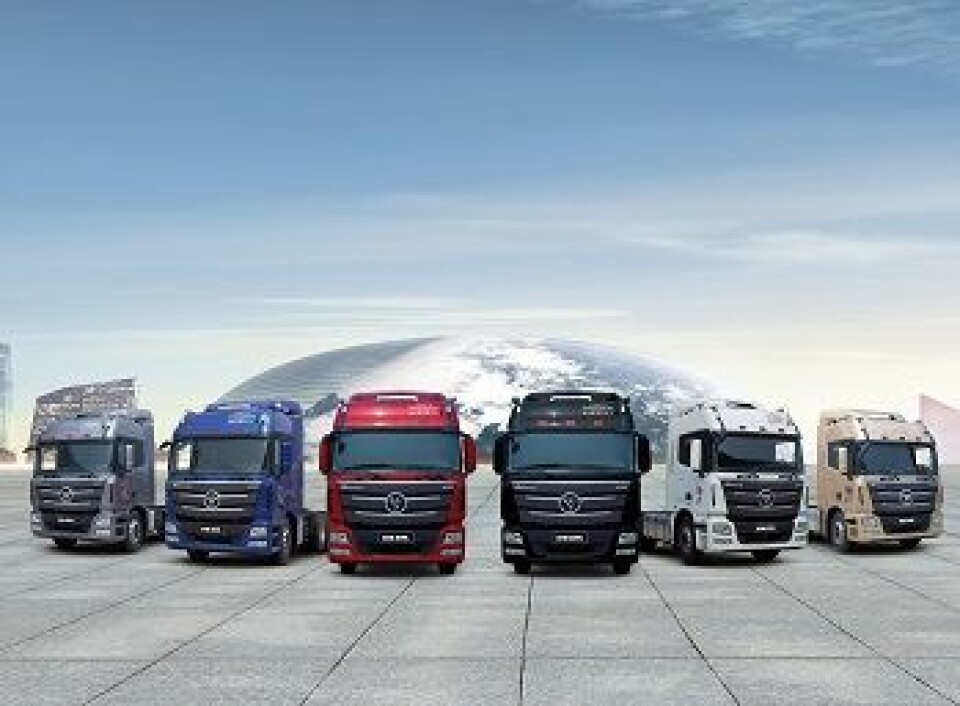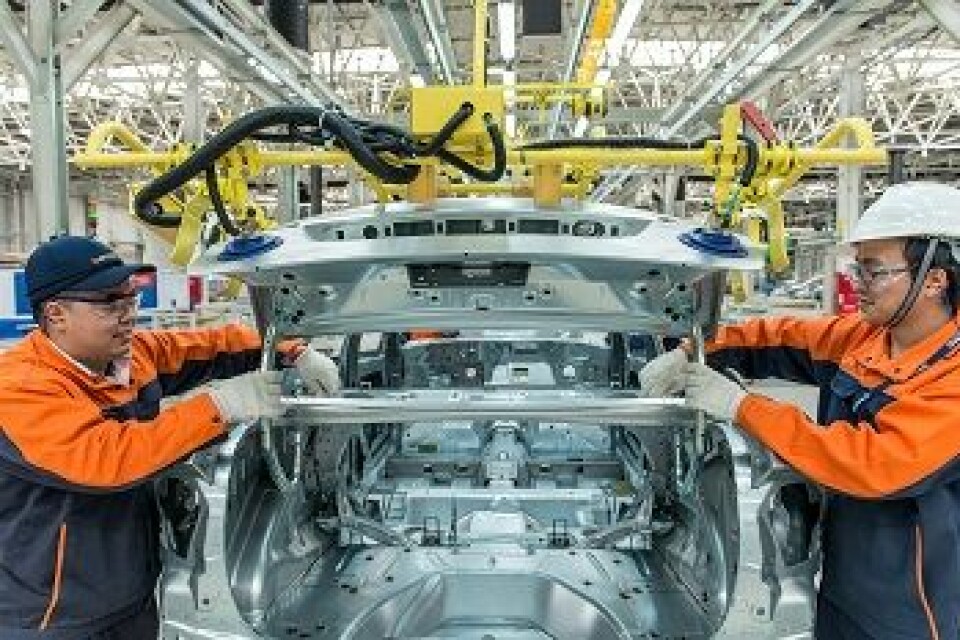China steamrolls on

Demand for cars is growing despite the economic slowdown –and domestic OEM are getting competitive
Demand for cars in China is still growing despite a wider economic slowdown in the country, but the near-term prospects of global OEMs look shaky as consumers increasingly turn to cheaper, Chinese-branded cars and all makers attempt to confront a worsening overcapacity issue. Sales in the world’s largest vehicle market to the end of October were slightly under 16,500,000, according to the China Association of Automobile Manufacturers (CAAM), up 3.9% on the year before and up an impressive 11% in the month of October.
The boost was thanks in part to a government tax cut which halved the amount charged on new vehicles with engines below 1.6 litres – the majority of cars sold in the country. This means that China is poised to overtake the 23.5m car sales recorded in 2014. In a country where the bulk of cars intended for the domestic market are built within its borders, production will be up too from last year’s 23.7m.
The raw figures hide a shift in the buying habits of the country. Sales of SUVs are climbing ever higher, reaching 4.7m by the end of October, up a massive 48% on the year and shrinking the share of the dominant sedan, which dropped 8% to 9.2m. This shift to SUVs is being exploited by domestic Chinese makers in particular, who have reversed a long slide in market share against global OEMs to re-establish themselves as a viable option for buyers. To the end of September 2015, domestic makers took a 41% market share, up 3.3% on the year before. Their share of the rising SUV market was even bigger at 53%, with just over 2m sold to the end of September, up a mighty 82% on the previous year.
China is poised to overtake the 23.5m car sales recorded in 2014, despite the economic slowdown. Production will top last year's 23.7m
The biggest-selling domestic-branded SUV to the end of October was the Haval H6 from Great Wall, followed by the Baojun 560 and the Trumpchi GS4. Domestic cars have always been cheaper than their global equivalents, but recently they have upped their game in other ways, according to analyst IHS Automotive. “We’ve seen significant improvement in quality and design,” says James Chao, head of Asia-Pacific at IHS. While the domestic makers sell brands which are mostly unknown outside China, the highly complex network of joint ventures and relationships with global manufacturers means that these gains in domestic cars are built on the back of foreign expertise.
Baojun is a good example. The 560 SUV is the latest – and generally agreed to be the best – model from the brand, which is actually part of the SAIC joint venture with General Motors that includes the ever-popular Wuling micro-van range (the two giant makers also build Buicks as GM Shanghai). The market obviously agrees; to become the second-best seller in the Chinese-brand SUV market in October in six months from launch is impressive.
Just behind it in the October charts, the Trumpchi GS4 is another car built on knowledge gleaned from abroad. The brand is owned by the government-run Guangzhou Automobile Group (GAC), whose joint venture partners include Fiat, Toyota, Honda and Mitsubishi. The first Trumpchi was a sedan launched in 2010, based on Alfa Romeo’s 166 platform.
Overcapacity problem worsens
China’s big problem is massive factory overcapacity, exacerbated by the vast number of brands – an estimated 90 from around 40 carmakers. The desire to create an industrial footprint to satisfy the massive scramble for new cars that took place in the six years from 2007 has produced inevitable problems now that the slowdown is here. In its company report earlier this year, Ford warned that overall capacity in the country could be 32m cars annually from now until 2019, quoting figures from IHS. That might be acceptable in 2020, when IHS estimates that the market will have climbed to 29.5m, up from 23.5m last year. Right now, it puts makers in a difficult position, especially with more capacity coming.
Ford itself has an annual production capacity of 1m in China from three plants run with local maker Changan, excluding its van enterprise with Jiangling Motors. Perhaps significantly, the US maker’s next big investment push into China is not capacity but research and development, with 11.4 billion yuan ($1.8 billion) pledged earlier this year to expand mainly its Nanjing R&D centre which was first established in 2007.

Meanwhile, other global OEMs are still in the midst of expansion plans, representing surely what must be some of the last conventional high-output plants to go in before the end of the decade. One example is the Guangzhou factory being built by GAC and Fiat Chrysler Automobiles (FCA) which is scheduled to come on stream in the first half of next year. Between this plant and the one in Changsha which was recently overhauled for production of the Jeep Cherokee, FCA and GAC expect to have capacity for 700,000 units by 2018, making eight different vehicles, three of them Jeeps. That will bring GAC production up to 3m vehicles by 2020, the company reckons.
Renault is also gearing up to start production early next year at its new plant in Wuhan, Hubei province, which it is building with partner Dongfeng. The factory will produce a redesigned version of the Renault Kadjar, another entrant into the fast-expanding C-segment SUV category, plus a slightly larger SUV. The Kadjar will not be built on the CMF platform used for the European version, but an older Nissan platform. Renault says this is to keep the parts localisation higher in China, as much as 85%, presumably in a bid to make the cars competitive against the newly popular and low-priced Chinese SUVs. Renault’s long-term goal is to sell around 700,000 cars in the country, up from almost nothing now.
The mass-market OEM that is striking hardest in China right now is Korean maker Hyundai, which this year broke ground on not one but two new plants, bringing its total there to five. The fourth will be in Changzhou, also Hubei province, making an initial 200,000 cars in its first full year in 2017 and rising to 300,000 by 2018. As well as full capability from press shop to assembly, the complex will have an engine plant.
The fifth plant will be constructed in Chongqing in China’s mid-west at a cost of $1 billion, with joint-venture partner Beijing Automotive Group. It will make a new SUV and a C-segment car; production capacity will be 300,000 from its launch in 2017. Whether Hyundai sales can support the two new plants remains to be seen, but sales of Korean cars in China were the fastest rising of any country in October, according to CAAM, while Beijing Hyundai was second in the SUV charts for the same month.
Premium makers struggle
Audi estimates the premium market to represent around 9% of sales in China, but some OEMs are finding it harder than others to do well this year. One big casualty has been Jaguar Land Rover (JLR), which saw sales contract by a painful 32% in the second quarter this year and recorded a loss for the quarter as a result. Contributing to this loss was the £245m fallout from the Tianjin Port explosion in August. JLR reported that “many” of the 5,800 vehicles it had stored in Tianjin were destroyed or damaged, and that it could not yet specify the insurance payout.
The fall in numbers was down in part to a reduction in stock. “JLR inventory is one of the highest in premium OEMs,” explains Chao at IHS. This comes as JLR started production in October last year of the Range Rover Evoque at a new factory built with its partner Chery, with more new models planned. The company has made huge amounts of money from China over the last few years, generating revenues of £7.6 billion in China in 2014 – more than double its next-biggest market. However, the downturn has caught JLR off-guard. “There are more reasons behind the sales fall, such as pricing strategy, localised product quality, brand reputation, establishment of dealers’ network, etc, [in] none of which JLR can compete with BMW, Audi and Mercedes, frankly speaking,” says Chao.
Daimler, which has a joint venture with Foton that makes Auman-branded heavy trucks, said that sales were down 21% in the first nine months to 14,300. Its interim company report claimed that the introduction of the CN4 emission standard (similar to Euro4), which started in January 2015, was one reason for the contraction. China Research said that the added complexity increased purchase costs.
However, the move to tougher emissions standards could be cause for celebration among truck-makers, the analyst believes. The so-called yellow-label scheme in which older, more polluting vehicles are earmarked for scrap, will boost sales. And in the future, truck users will be forced to upgrade to more expensive vehicles as emission standards get even stricter. This is being reflected in the partnerships that local makers are forging with foreign OEMs. For example, China’s biggest truck-maker, Sinotruk, partnered with Steyr for the HOWO heavy- truck brand and with Germany’s MAN for the Sitrak brand.
There is no doubt that investment in China’s infrastructure will return. That and the desire to drive out the most polluting vehicles will give hope to truck-makers. Until then, the country’s multitudinous domestic makers and its far fewer foreign brands need to ride out the current slump and its attendant overcapacity.

Volvo, owned by China’s Geely, was another OEM which suffered this year, reporting a sales drop of 3.6% to 63,700 cars between January to October. BMW sales were flat, with only a 1.9% increase to 342,920 in the first three quarters for its three brands (BMW, Mini and Rolls-Royce), while Audi reported a fall in production at the Changchun factory which is run by the FAW-VW Automotive Company, to just under 225,000 cars in the first half of the year. Mercedes has been the only big winner so far, seeing growth of 39% in the first nine months to 105,700 car sold.
However, Audi’s chairman, Rupert Stadler, believes that premium sales have further to climb in the country, despite what OEMs are describing as the ‘normalisation’ of the car market. “After a period of consolidation, we will see permanent growth in China, because there [are] enough affluent people who want to buy premium products,” he told journalists at the Frankfurt Motor Show in the autumn. “Premium is only 9% of market, but why shouldn’t it be 12 or 15%?” He did say that carmakers would need to treat China more like Western markets, refreshing their products more frequently to keep pace with customers’ technology demands and also closely monitoring stock levels.

Opportunities open up for EVs
One market which does look set to grow is battery electric vehicles (EVs). China has famously said that it wants 5m electric cars by 2020 and the government is busy making sure it will happen. The state has pledged support for a charging infrastructure to accompany this expansion, as well as offering generous grants to those wanting to buy EVs. The latest push involves offering precious manufacturing licences for new EV companies – the only car-manufacturing licences issued since 2009, according to some reports. The idea is that non-carmakers will be enticed into the market and improve the automotive ‘gene pool’ by innovating.
In the first nine months of 2015, China built 144,284 EVs, double the total for the same time last year, according to figures from CAAM. Almost two-thirds were pure electric and the remainder were plug-in hybrids. The global OEMs are starting to respond to this market. In September, Renault announced that it would make an electric car with partner Dongfeng, to be sold under one of the latter’s brands and built at the new Wuhan plant from 2017. Daimler, with its partner BYD, was one of the first foreign makers with an EV – the Denza-branded electric car – while BMW sells the Zinoro, which is based on the OEM’s X1 compact SUV and built with its partner, Brilliance.
But it is the Chinese makers who are currently dominating the EV market and announcing huge expansion plans. Local media outlets report that Changan will introduce no fewer than 34 electric and plug-in hybrid vehicles by 2020, while SAIC will reportedly develop more than 30. The other big push to persuade consumers to buy EVs comes from local cities, in the form of a clamp-down on local combustion-engine vehicles. This year, Shanghai banned 46,100 older, more polluting vehicles from its roads by threatening to confiscate the portable licence plates which owners need to register their cars. One innovative scheme is run by newcomer Kandi, already number two in the marketplace behind BYD, which operates a rental scheme in cities, in some cases letting consumers order its diminutive EVs from a giant vending machine.
The world’s largest country for motorcycle production is coming ever closer to losing its position to India as the dozens of local producers fail to convert the squeeze from a highly regulated local market into greater numbers of exports. Production figures from China Association of Automobile Manufacturers (CAAM) show that production was down 8.8% to 14,255,000 in the first nine months of this year, while September itself was even worse, with a fall of 15%. In 2015, China will come perilously close to being beaten on production by India, which last year made 18.5m two-wheelers.
Without being specific, CAAM reports that among the 92 motorcycle manufacturers which belong to the organisation (the real number of makers is thought to be around 200), profits dropped over the year. However, it said that the top ten manufacturers experienced an increase in profits, indicating that consolidation in the industry is long overdue.
Exports remain vital to the industry, accounting for over one-third of production. But to the end of September, these too had fallen by 7.9% to 5.9m. Without viable branding able to translate sales of budget machines into a more sustainable, higher-margin business abroad, Chinese makers look set to continue the downward spiral which started when cities banned internal-combustion machines. One possible avenue is a global expansion for its homegrown electric bikes, which according to Navigant Research are used daily by around 170m people in the country.


